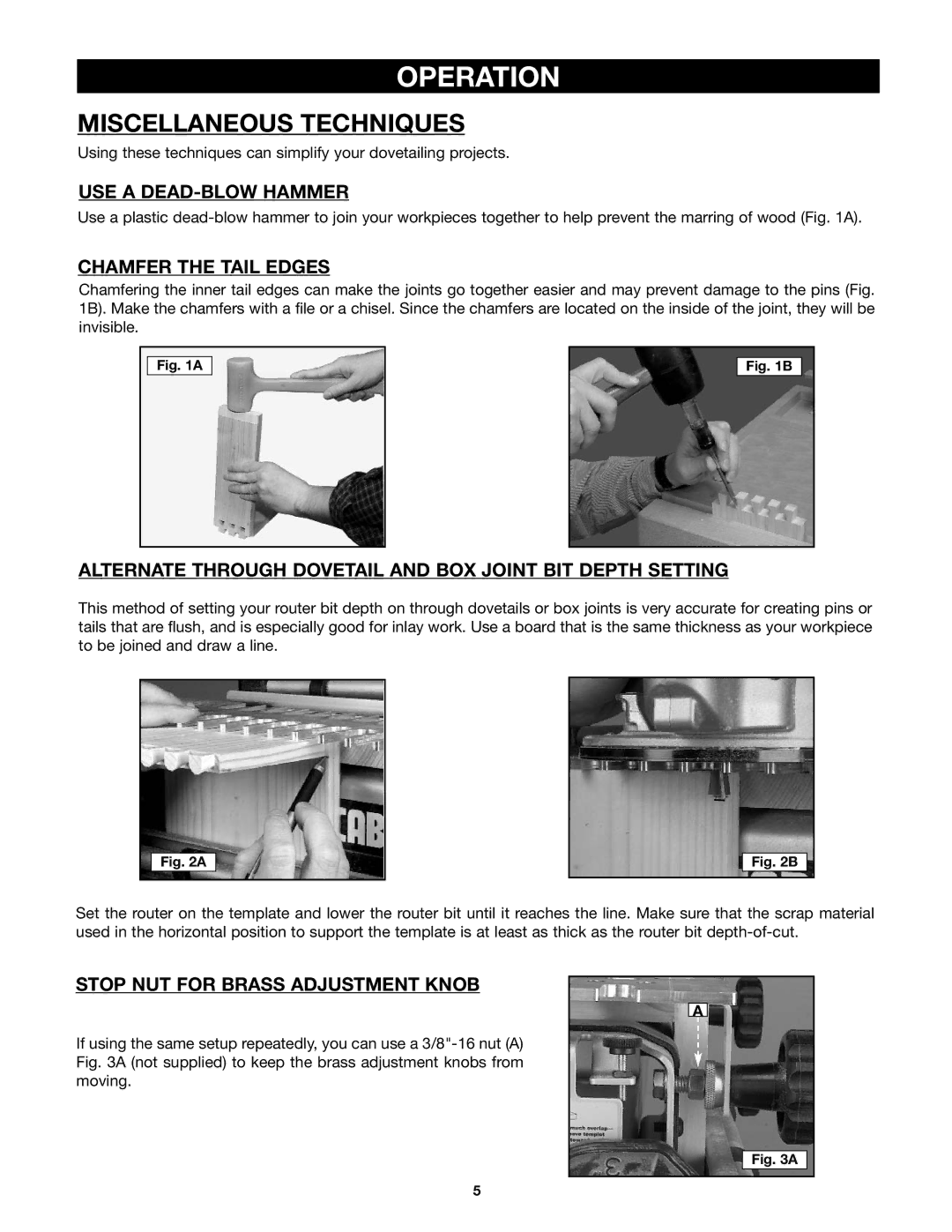
OPERATION
MISCELLANEOUS TECHNIQUES
Using these techniques can simplify your dovetailing projects.
USE A DEAD-BLOW HAMMER
Use a plastic
CHAMFER THE TAIL EDGES
Chamfering the inner tail edges can make the joints go together easier and may prevent damage to the pins (Fig. 1B). Make the chamfers with a file or a chisel. Since the chamfers are located on the inside of the joint, they will be invisible.
Fig. 1A
Fig. 1B
ALTERNATE THROUGH DOVETAIL AND BOX JOINT BIT DEPTH SETTING
This method of setting your router bit depth on through dovetails or box joints is very accurate for creating pins or tails that are flush, and is especially good for inlay work. Use a board that is the same thickness as your workpiece to be joined and draw a line.
Fig. 2A
Fig. 2B
Set the router on the template and lower the router bit until it reaches the line. Make sure that the scrap material used in the horizontal position to support the template is at least as thick as the router bit
STOP NUT FOR BRASS ADJUSTMENT KNOB
A
If using the same setup repeatedly, you can use a
Fig. 3A
5
